Forgotten Figures and Where Are They Now?
Tinkerbell’s Mind
Bob Crewe had a master plan for the group, 'the Glitterhouse', who had been on his payroll for almost a year at the time that their first recordings came out. Crewe envisioned a one-two punch! Hit them with the 'Barbarella soundtrack album and then two months later, the Glitterhouse album, 'Color Blind'! Superstardom was surely around the corner at last for the now warehoused Glitterhouse. Big hits and big concerts? Barbarella' the single, did not happen for the Glitterhouse. The soundtrack album had some success but didn't seem to translate into any recognition for the band. The presence of the Glitterhouse was downplayed on the record and it seemed mostly a showcase for Bob Crewe and Charles Fox. The release of 'Color Blind - First Edition' was quick & quiet. A single from the album, 'Tinkerbell's Mind' made the top 50 in NYC, but died elsewhere. Any publicity was small indeed, and the band was never put out on the road or to play live. About four weeks after the release of 'Color Blind', when it was clear that the single had bombed, the Glitterhouse were taken off their meager salary, given no gigs and told to make do. Crewe had the band do some new demo's but there was also tension in the band. So, the Glitterhouse, attacked from without and within soon broke up and were readily released from their record label. One can only theorize about why the Glitterhouse were treated so shoddily by Crewe and his label. The Glitterhouse were a great live band that was never given an opportunity to play live. Crewe's company also managed them. Perhaps the label couldn't deal with a white sounding pop band fronted by a Black man. Who knows?
Posted By: Paul - Fri Dec 03, 2021 -
Comments (0)
Category: Forgotten Figures and Where Are They Now?, Music, Psychedelic, 1960s
Jackson Barnett, “The World’s Richest Indian”
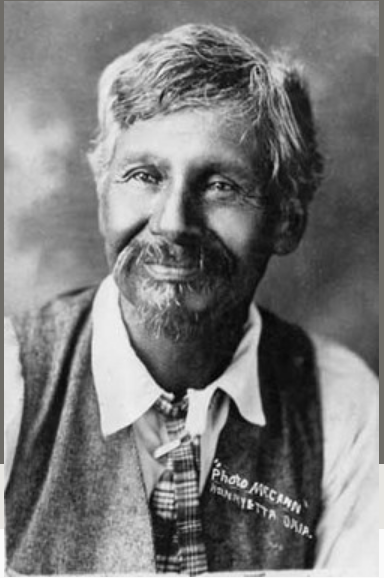
From Wikipedia:
With the discovery of oil on Barnett's lands in 1912, a series of court actions by interested parties litigated the control of Barnett's trust. Barnett was declared incompetent and denied access to his affairs simply because he only spoke the Muscogee Creek language and not English. Barnett was permitted a modest income and was installed in a house near Henryetta. In 1919 the courts allowed the diversion of money from Barnett's trust to the construction of the "Jackson Barnett Hospital" in Henryetta. In 1920 Barnett, then in his seventies, married Anna Laura Lowe (1881-1952), a fortune hunter whom he had met only once before. The couple had to marry in Kansas after a marriage license was denied in Oklahoma. Barnett's guardians were unable to annul the marriage and the hospital plans were never pursued. Instead, the trust was divided between Anna Barnett and Bacone Indian College.[3]
The Barnetts moved to Los Angeles and bought a mansion on Wilshire Boulevard, where Jackson passed his time directing traffic at a nearby intersection. Legal actions continued from 1923 to 1929, which provoked congressional hearings on the role of the Bureau of Indian Affairs in establishing and administering the Barnett trust and others like it. The hearings led to criticism of BIA administrator Charles H. Burke's actions, and during the 1930s, to the Indian Reorganization Act of 1934. In 1927 Barnett v. Equitable again proclaimed Jackson Barnett incompetent in federal court. In March 1934 another federal ruling annulled the Barnetts' marriage and Anna Barnett's rights to Jackson's trust on the grounds that Jackson had been "kidnapped" by a woman of suspect moral character, but allowed Anna to act as Jackson's caretaker. Jackson Barnett died on 29 May 1934 of natural causes: allegations that Anna had poisoned him were found to be false.[3][4]
Anna was finally evicted from the Wilshire Boulevard residence after four years, even though she had gained significant support from Los Angeles society,[5] including Los Angeles District Attorney Burton Fitts and California Governor Frank Merriam. Anna had to be tear-gassed after she threw a hatchet during the eviction,[5] and lived the remainder of her life with a daughter while unsuccessfully attempting to regain a share of the Barnett estate, which amounted to $3.5 million in 1934 ($55.4 million estimated value in 2012 dollars).
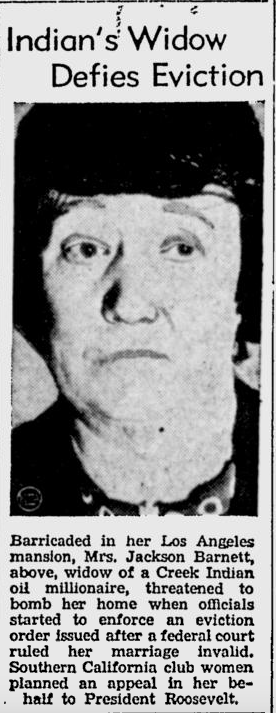
Source.
Lots more info here.
Posted By: Paul - Sun Nov 10, 2019 -
Comments (0)
Category: Crime, Unauthorized Dwellings, Forgotten Figures and Where Are They Now?, Frauds, Cons and Scams, Government, Hospitals, Twentieth Century, Native Americans, Weddings
The Lobster Waitresses of Hackney’s
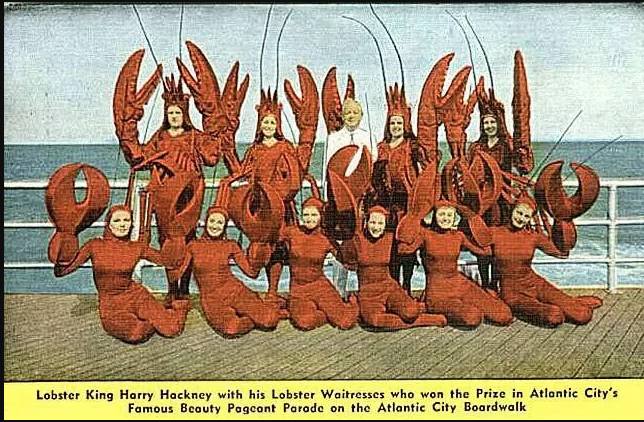
Short entertaining history of Hackney's here.
Posted By: Paul - Sat Mar 09, 2019 -
Comments (3)
Category: Animals, Beauty, Ugliness and Other Aesthetic Issues, Culture and Civilization, Food, Forgotten Figures and Where Are They Now?, Regionalism, Twentieth Century
George Washington Glick

As you can see from this 1914 article George Washington Glick was practically unknown when his statue was new. Is it any wonder then that, as Wikipedia tells us, "In 2003, Kansas became the first state to replace a statue [in the National Statuary Hall] when it replaced Glick with a bronze of former president Dwight D. Eisenhower. Glick's statue was moved to the Kansas History Center in Topeka."


Posted By: Paul - Tue Aug 08, 2017 -
Comments (0)
Category: Forgotten Figures and Where Are They Now?, Politics, Statues and Monuments, 1910s, Nineteenth Century
Munyon’s Homeopathic Cures
Once, these remedies were state-of-the-art.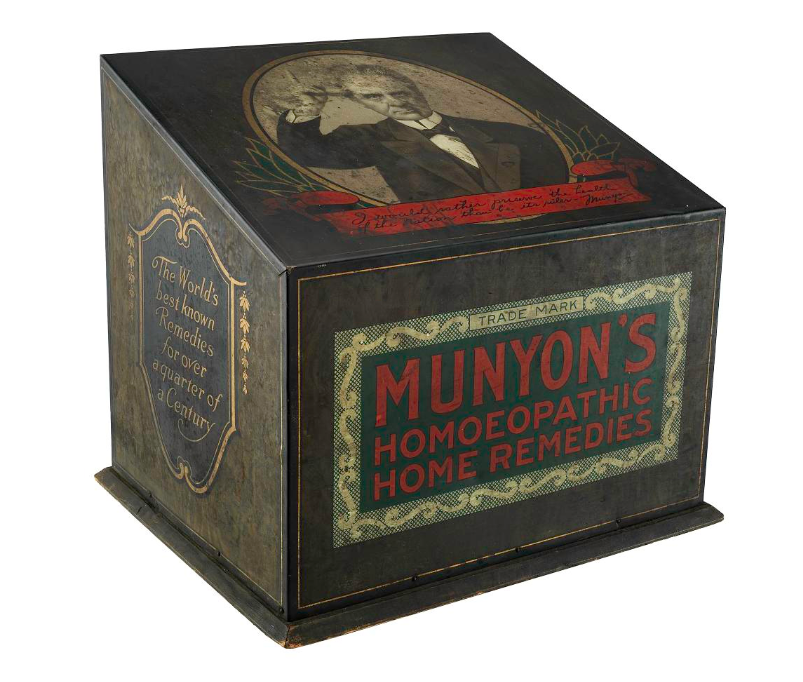
More photos here.
His Wikipedia page.
Although Munyon appears to be clutching a cigar in his upraised hand, that is indeed supposed to be his signature gesture of upraised index finger.
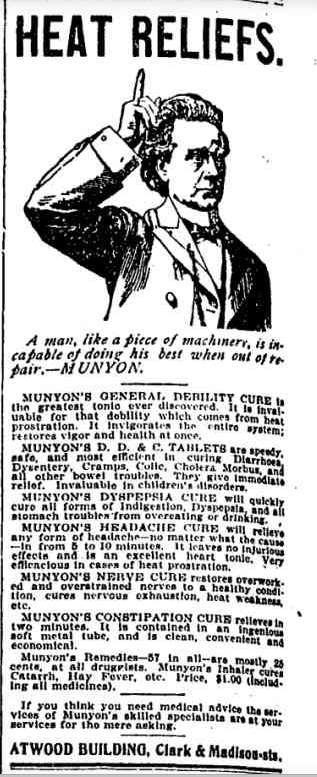
Original ad here.
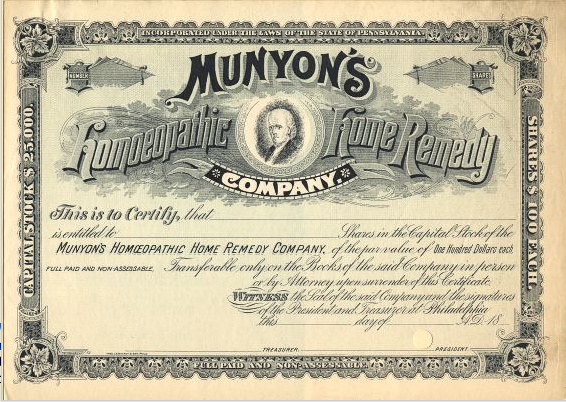
Certificate here.
Posted By: Paul - Tue Jun 13, 2017 -
Comments (3)
Category: Forgotten Figures and Where Are They Now?, Patent Medicines, Nostrums and Snake Oil, 1900s
Adolph Heilborn’s Theories on Women
I can learn little personally about Adolf Heilborn (1873-1941). But his book THE OPPOSITE SEXES caused a bit of a stir when it appeared in 1927, given that he described the female human as the missing link between ape and male human. Naturally, there was, um, a little pushback.

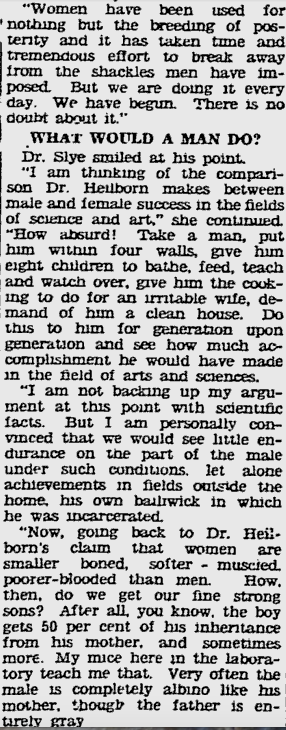

Original article here.
Here is the bio of his opponent.
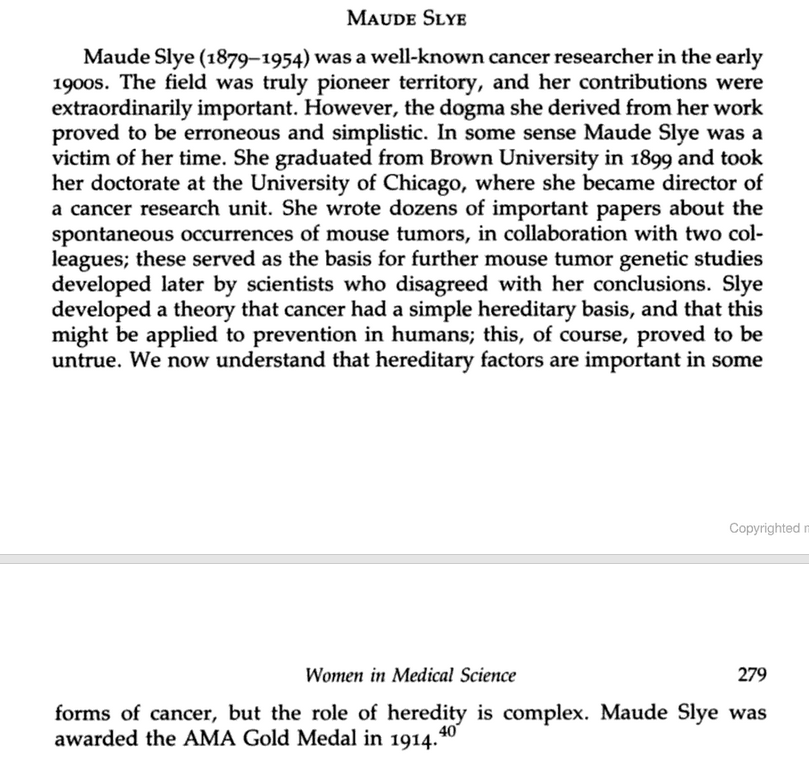
But maybe it was all a joke! If this bookplate belongs to the same fellow, we can see he had a sense of humor.

Posted By: Paul - Fri Aug 26, 2016 -
Comments (7)
Category: Animals, Eccentrics, Feminism, Forgotten Figures and Where Are They Now?, Science, Anthropology, Stereotypes and Cliches, 1920s, Men, Women
Hannah, the Comicstrip
I stumbled on this forgotten strip while browsing through old newspapers online. Apparently it was a weekly feature. Its boneheaded surreal literalism is right up there with Bushmiller's Nancy and Soglow's The Little King.Not much to be learned about its creator, Courtney Dunkel, beyond what you can read at the link.
Here is a good blog post about one of Dunkel's other strips.
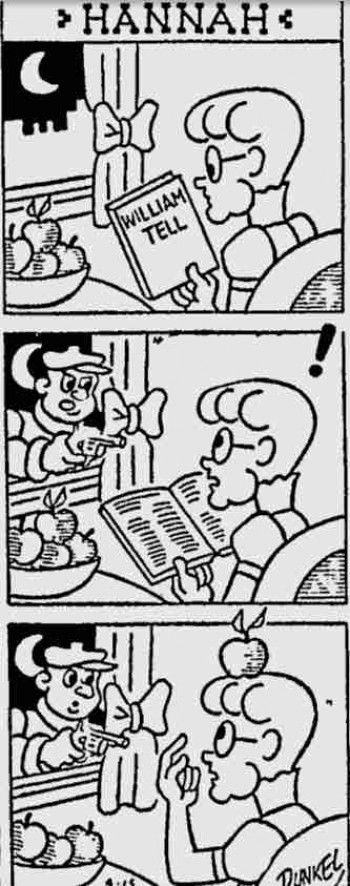

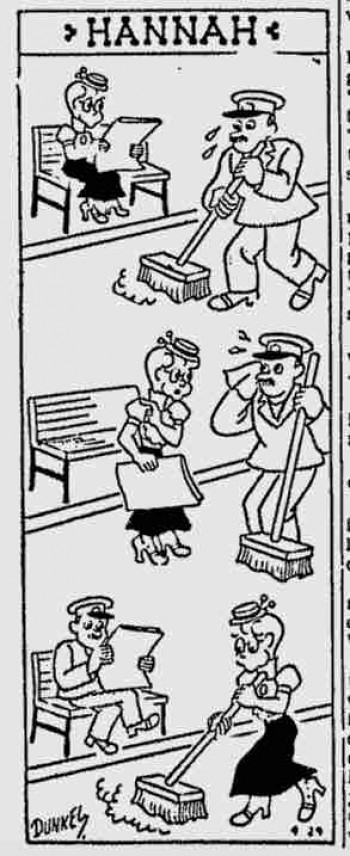
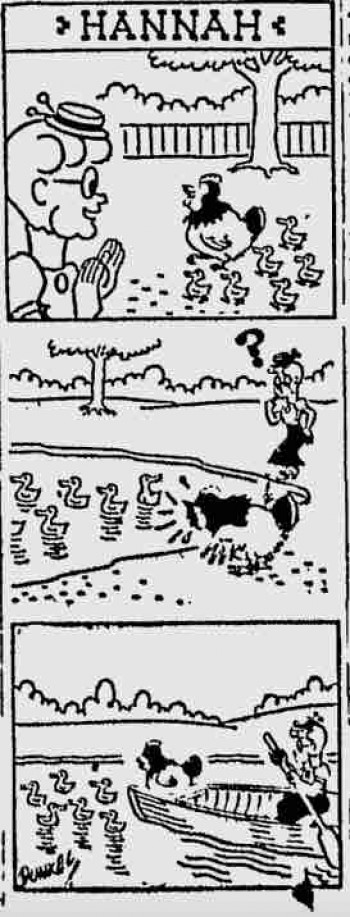
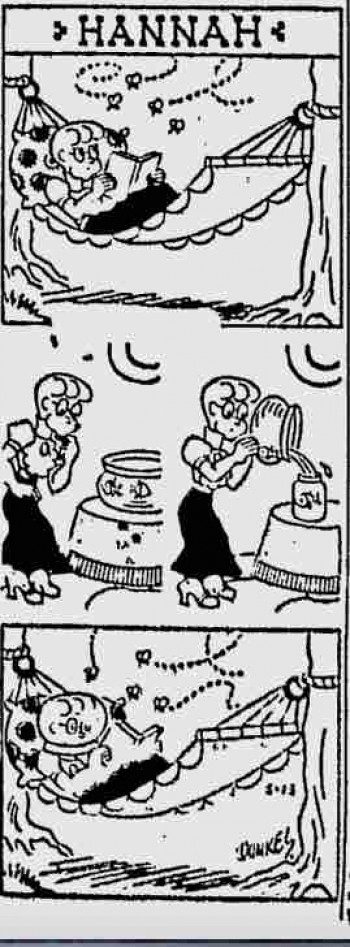
Posted By: Paul - Fri Jun 24, 2016 -
Comments (0)
Category: Forgotten Figures and Where Are They Now?, Comics, 1940s

| Who We Are |
|---|
| Alex Boese Alex is the creator and curator of the Museum of Hoaxes. He's also the author of various weird, non-fiction, science-themed books such as Elephants on Acid and Psychedelic Apes. Paul Di Filippo Paul has been paid to put weird ideas into fictional form for over thirty years, in his career as a noted science fiction writer. He has recently begun blogging on many curious topics with three fellow writers at The Inferior 4+1. Contact Us |




